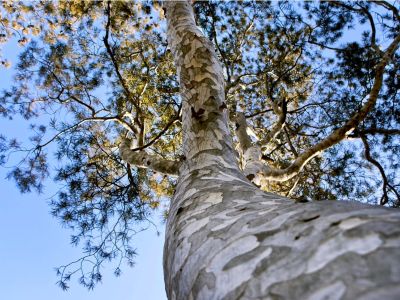Growing Lacebark Pines
Lacebark pine is a slow-growing tree that, in the garden, reaches heights of 40 to 50 feet (12-15 m.). The width of this picturesque tree is usually at least 30 feet (9 m.), so allow plenty of space for growing lacebark pines. If you’re short on space, dwarf lacebark pine trees are available. For example, ‘Diamant’ is a miniature variety that tops out at 2 feet (61 cm.) with a 2 to 3 foot (61-91.5 cm.) spread. If you’re thinking about growing lacebark pines, select a planting site carefully, as these trees perform best in full sunlight and moist, well-drained soil. Like most pines, lacebark prefers slightly acidic soil but tolerates soil with a slightly higher pH than most others. Although the unique, exfoliating bark sets this tree apart from other pines, the bark doesn’t begin to peel for about 10 years. Once it begins, however, peeling lacebark pine trees put on a real show by revealing patches of green, white, and purple underneath the bark. This distinctive feature is most apparent during the winter months.
Caring for Lacebark Pine Trees
As long as you provide the proper growing conditions, there isn’t much labor involved in growing lacebark pine trees. Just water regularly until the tree is well established. At that point, lacebark pine is fairly drought tolerant and requires little attention, although it appreciates a little extra water during extended dry periods. Fertilizer generally isn’t necessary, but if you think growth is lagging, apply a general-purpose fertilizer before mid-July. Never fertilize if the tree is drought-stressed and always water deeply after fertilizing. You may want to train the tree to grow from a single trunk, which creates stronger branches less prone to breaking when laden with snow and ice. The fascinating bark is also more visible on single-trunked trees.
